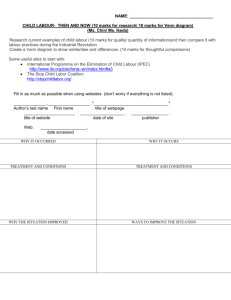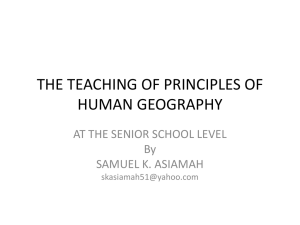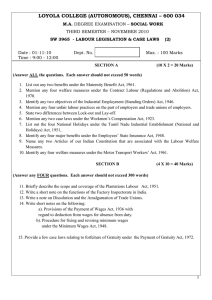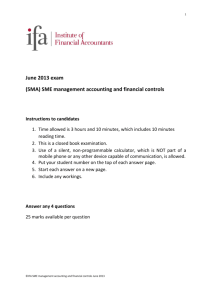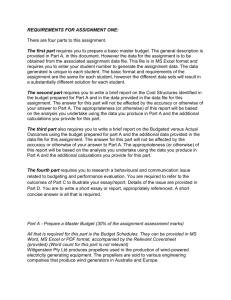Industry Pastpaper Questions & Answers
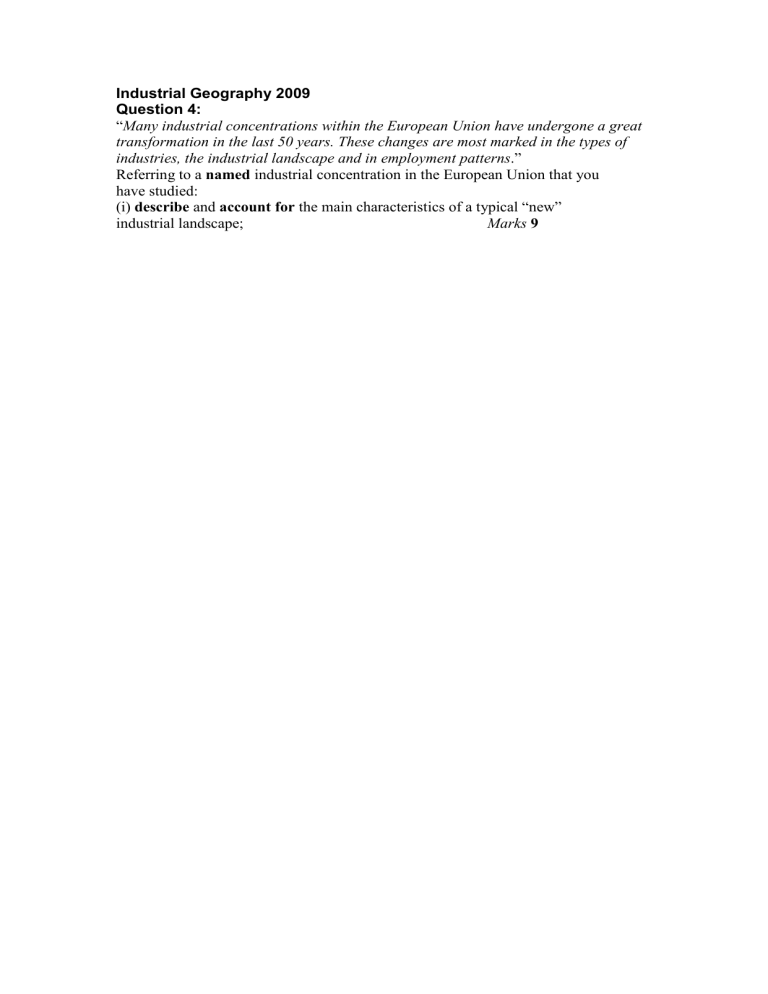
Industrial Geography 2009
Question 4:
“ Many industrial concentrations within the European Union have undergone a great transformation in the last 50 years. These changes are most marked in the types of industries, the industrial landscape and in employment patterns
.”
Referring to a named industrial concentration in the European Union that you have studied:
(i) describe and account for the main characteristics of a typical “new” industrial landscape; Marks 9
(ii) suggest ways in which the national government and the European Union have helped to attract new industries to your chosen area. Marks 7
See above Note.
Industrial Geography 2008
Question 8:
( a ) Study Reference Diagram Q8A.
Describe and explain the impact of industry on the environment of an old industrial area such as that shown in Reference Diagram Q8A. 6 marks
Environmental Impacts on the site of Ravenscraig Steelworks which closed in 1992:
4 kilometre squared area of derelict land
River Calder nearby polluted.
Contaminated soil needed remediation.
Coking Coal production was a highly polluting industry.
Social Impacts
Economic impacts – Spiral of Decay – Knock on effect
Deindustrialisation and the Domino Effect.
Effects
Blight on landscape – old factories and bings
Need for Government/EU assistance to regenerate the area
Need for improved infrastructure (e.g. road network) to allow diversification away from traditional industries
( b ) Study Reference Diagram Q8B.
For South Wales, or any other industrial concentration in the EU, describe and explain the main location factors that influence the location of new industrial developments. 8 marks
Reasons for Growth - (Physical and Human)
•
Availability of Brownfield sites (previously used industrial area)
•
The site provides room for expansion.
•
Hunterston Deepwater Port are available for the IMPORT of raw materials and for the EXPORT of finished products- in particular to
EU countries.
•
Good road infrastructure M74 (motorway) access from North/South
UK
•
Airports for both business travel and movement of high value products - close proximity to Glasgow and Prestwick Airports
•
Large supply of skilled labour available after the decline of traditional engineering industries.
•
Training opportunities available - local colleges and universities
•
Relatively low wages in comparison to other European developed nations
•
Few working restrictions in UK.
•
Being an assisted government area, local and national incentives and grants were available.
•
English language a benefit in EU/world market place
•
Multiplier effect for new supplier/component companies
Industrial Geography 2007
Question 4:
( a ) For South Wales, or any other industrial concentration in the European Union which you have studied, describe the physical and human factors which led to the growth of traditional industries before 1950. 8 marks
( b ) Study Reference Map Q4.
Describe and explain the methods used to attract newer industries and investments to South Wales, or to any other industrial concentration in the
European Union which you have studied. 10 marks
For North East England, or any other industrial concentration in the EU explain why older traditional industries have declined over the last 20 years.
Decline in Clyde Shipyards
British Motor Vehicle Industry
Coal Mining
Steel Manufacturing
1.
Why? Declining international markets as British Empire shrank.
(India became independent 1947)
2.
Competition from abroad using cheap labour.
3.
Manufacturing exported to China using cheap labour. Berwin the suit
Manufacturer.
4.
British car industry went bust due to poor management, a militant
work force and very poor quality control.
5.
The demise of the car industry meant a collapse in local markets
for steel.
6.
The site of Ravenscraig Steelworks became a disadvantage as bulk
ore had to be transported from Hunterston deep water port.
7. A lack of reinvestment of profits into R&D developing hi-tech,
sophisticated elite manufacturing products. BAe Sytems, Mclaren.
Decline began in the 1960s due to:
Loss of market – iron became largely obsolete except at steel plants
(not in Falkirk)
Reduction in raw materials readily available
Expense of transporting to coast for export to International markets
Competition from overseas where labour and materials are cheaper
